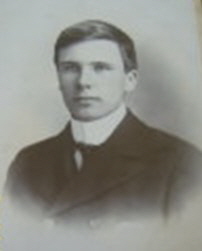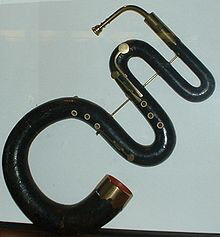|
“Dear Parish Church choirmaster……”
The world of science and the arts owes a considerable debt to the extra-curricular studies of Victorian and Edwardian rural clerics. Maybe not in
the same league as Gilbert White with his natural history studies of Selbourne or Sabine Baring-Gould, the prolific novelist and hymn writer, nonetheless Sussex can boast Canon Kenneth MacDermott. His only known links with Warbleton
are a bit tenuous, being limited to recalling the story of the Buxted born martyr Richard Woodman in his history of that parish. Apart from Buxted- where he was buried in 1956 - he lived at various times in Hurstpierpoint, Selsey and
Bosham. Buxted- where he was buried in 1956 - he lived at various times in Hurstpierpoint, Selsey and
Bosham.
MacDermott’s major legacy is housed in the library of the Sussex Archaeological Society. This
consists of documents, letters and music books resulting from some 200 letters he wrote from 1917 onwards to the parish choirmasters of the diocese of Chichester appealing for information about church bands and their music.
First of all, a bit of historical background: the Puritans who were in control in the mid-seventeenth
century were vehemently opposed to musical instruments in churches. This led to the wholesale destruction of organs. It wasn’t until about 1700 that parishes started to reinstate their organs but
the difference between town and country was marked. By 1780 80% of London parishes had installed new organs to accompany the singing, but the national figure was less than 10%. In the
country where few folk knew how to play an organ even if a parish could afford one, the “musical vacuum” was filled by the village bands. They held sway until the radical reforms of the mid-nineteenth century instituted by the
Oxford Movement. As far as music was concerned this reform meant the demise of the bands, the sanitisation of music to make it fit for congregations and the widespread introduction of “Hymns Ancient and Modern”.
Whilst a curate at Hurstpierpoint in 1895, the Rev MacDermott had been given an old manuscript book containing the hymn and
psalm tunes that had been performed by the church’s village band. Realising that a lot of this music had been lost along with the
instruments and players, and that, “the topic was of such never failing interest”, he made it his life’s work to document as much as
he could so that, “others might like to hear the story of Sussex Church Music in the past.” Thus his 200 letters have led to Sussex
being the best documented geographical area of this, so called West Gallery Music. A later researcher, Vic Gammon, Emeritus
lecturer in Folk and Traditional Music at the University of Newcastle felt there was sufficient evidence proving that over 50% of rural
Sussex churches had such village bands of singers and instrumentalists in the first half of the nineteenth century.
Replies to MacDermott’s letters resulted in gifts of manuscript books and some great stories which formed the basis of his two
books (Thinks – another article!) a review in the Sussex Archaeological Collection (1919) a BBC programme in 1934 and presents of
some weird and wacky instruments. Whilst those in most common use were flutes, oboes, clarionets and fiddles, Berwick had a
cornopean (an early cornet), Brightling a banjo(!) and Hellingly provided a strong musical offering with eight instrumentalists including no less than four fiddles. Heathfield boasted a serpent.

(Serpent – V&A Museum)
Unfortunately, MacDermott was unable to track any of Heathfield’s instruments down – see
the text of the letter below - which in the case of the serpent may have been just as well. After all, it is only the most experienced players that can make the thing sound like a melodious bison …..
This should give you a flavour of a Sussex band’s makeup:
Let’s see, there was Jim Comber, the clurck, he played flewte, Steve, the cobble, he played
clar’net,and old Tomsett, “Grimy Tom “ we called him, he were a blacksmith, he scraped away on the gran’mother fiddle, the bass-viol, y’know…
As for the music forwarded to him, MacDermott mounted the replies on paper with the middle cut out so that you could see both
back and front. Being an Associate of the Royal College of Music, which was like an early degree qualification, he also harmonised
some of the tunes he was sent, such as “The Falmer Carol”. And one quire, Sussex Harmony, still does that today when digging out pieces fortunately left to us by the foresighted Canon MacDermott.
“I went to Heathfield in June 1920- & found a member of the Covell family but could not trace any of the instruments. I wrote to Mrs
Covell of Orchard Cottage, Ashurst, Tun Wells widow of one of the old minstrels, about the instruments. She replied that he remembered them as being in her husband’s possession but had lost sight of them for some time.
|